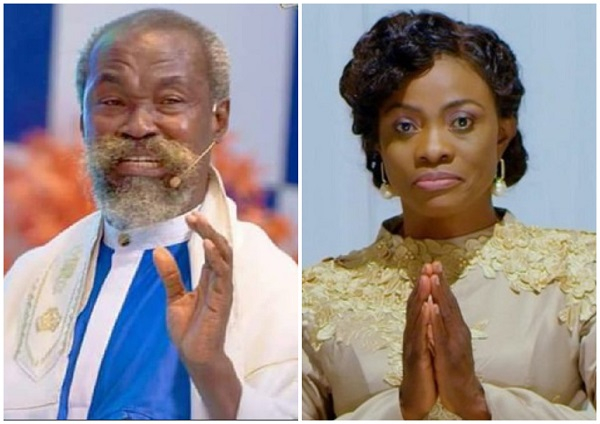At MIT, Lindsay Caplan reflects on artistic crossroads where humans and machines meet | MIT News | Massachusetts Institute of Technology
The intersection of art, science, and technology presents a unique, sometimes challenging, viewpoint for both scientists and artists. It is in this nexus that art historian Lindsay Caplan positions herself: “My work as an art historian focuses on the ways that artists across the 20th century engage with new technologies like computers, video, and television, not merely as new materials for making art as they already understand it, but as conceptual platforms for reorienting and reimagining the foundational assumptions of their practice.”
With this introduction, Caplan, an assistant professor at Brown University, opened the inaugural Resonances Lecture — a new series by STUDIO.nano to explore the generative edge where art, science, and technology meet. Delivered on April 28 to an interdisciplinary crowd at MIT.nano, Caplan’s lecture, titled “Analogical Engines — Collaborations across Art and Technology in the 1960s,” traced how artists across Europe and the Americas in the 1960s engaged with and responded to the emerging technological advances of computer science, cybernetics, and early AI. “By the time we reached the 1960s,” she said, “analogies between humans and machines, drawn from computer science and fields like information theory and cybernetics, abound among art historians and artists alike.”
Kaplan’s talk centered on two artistic networks, with a particular emphasis on American artist Liliane Lijn: New Tendencies exhibitions (1961-79) and the Signals gallery in London (1964-66). She deftly analyzed the artist’s material experimentation with contemporary advances in emergent technologies — quantum physics and mathematical formalism, particularly Heisenberg's uncertainty principle. She argued that both art historical formalism and mathematical formalism share struggles with representation, indeterminacy, and the tension between constructed and essential truths.
Following her talk, Caplan was joined by MIT faculty Mark Jarzombek, professor of the history and theory of architecture, and Gediminas Urbonas, associate professor of art, culture, and technology (ACT), for a panel discussion moderated by Ardalan SadeghiKivi SM ’22, lecturer of comparative media studies. The conversation expanded on Caplan’s themes with discussions of artists’ attraction to newly developed materials and technology, and the critical dimension of reimagining and repurposing technologies that were originally designed with an entirely different purpose.
Urbonas echoed the urgency of these conversations. “It is exceptionally exciting to witness artists working in dialectical tension with scientists — a tradition that traces back to the founding of the Center for Advanced Visual Studies at MIT and continues at ACT today,” reflected Urbonas. “The dual ontology of science and art enables us to grasp the world as a web of becoming, where new materials, social imaginaries, and aesthetic values are co-constituted through interdisciplinary inquiry. Such collaborations are urgent today, offering tools to reimagine agency, subjectivity, and the role of culture in shaping the future.”
The event concluded with a reception in MIT.nano’s East Lobby, where attendees could view MIT ACT student projects currently on exhibition in MIT.nano’s gallery spaces. The reception was, itself, an intersection of art and technology. “The first lecture of the Resonances Lecture Series lived up to the title,” reflects Jarzombek. “A brilliant talk by Lindsay Caplan proved that the historical and aesthetical dimensions in the sciences have just as much relevance to a critical posture as the technical.”
The Resonances lecture and panel series seeks to gather artists, designers, scientists, engineers, and historians who examine how scientific endeavors shape artistic production, and vice versa. Their insights expose the historical context on how art and science are made and distributed in society and offer hints at the possible futures of such productions.
“When we were considering who to invite to launch this lecture series, Lindsay Caplan immediately came to mind,” says Tobias Putrih, ACT lecturer and academic advisor for STUDIO.nano. “She is one of the most exciting thinkers and historians writing about the intersection between art, technology, and science today. We hope her insights and ideas will encourage further collaborative projects.”
The Resonances series is one of several new activities organized by STUDIO,nano, a program within MIT.nano, to connect the arts with cutting-edge research environments. “MIT.nano generates extraordinary scientific work,” says Samantha Farrell, manager of STUDIO.nano, “but it’s just as vital to create space for cultural reflection. STUDIO.nano invites artists to engage directly with new technologies — and with the questions they raise.”
In addition to the Resonances lectures, STUDIO.nano organizes exhibitions in the public spaces at MIT.nano, and an Encounters series, launched last fall, to bring artists to MIT.nano. To learn about current installations and ongoing collaborations, visit the STUDIO.nano web page.










